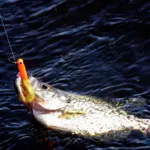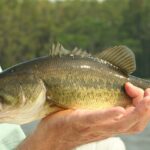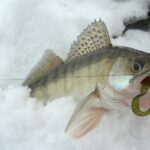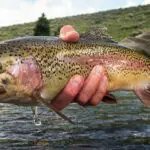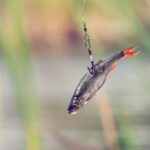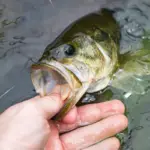If you’re an angler, you’re likely familiar with popular game fish, like bass, crappie, and trout. But have you ever seen a monkfish? There’s an excellent chance you’re unfamiliar with this unique, toothy anglerfish. That is unless you’re an avid deep-sea angler.
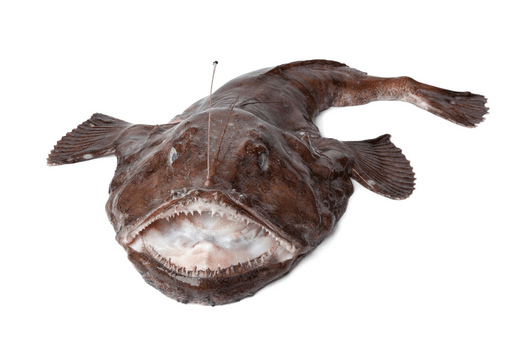
This guide will fill you in on everything you need to know about monkfish. We’ll explore what they are and check out some of the best ways to catch and cook the species.
What Is a Monkfish?
The monkfish (Lophius Americanus) lives at the bottom of the ocean and on coastal ocean floors. It belongs to a genus of predominant anglerfish.
This fish has a somewhat unusual appearance. It resembles a brownish blob, featuring a wide gaping mouth. Yet, the species is one of the tastiest saltwater fish in the world.
Monkfish have sharp teeth, and they’re opportunistic eaters. They eat everything from plankton and shrimp to large fish, even other monkfish.
What Do Monkfish Look Like?
Monkfish are instantly recognizable. After all, it’s hard to mistake their wide, flat, blob-like bodies and wide, toothy mouths.
These fish can have a dark brown or speckled gray top, and most have light-colored bellies. Their appearance will depend on their environment. As bottom fish, they have varying colorations to blend into ocean floors to catch prey.
Monkfish “burrow” into the ocean floor. As it kicks up sand and mud to remain disguised, it’s rare to see one swimming around near the water’s surface.
Adults can grow about four feet long, while females often grow much larger. Grown varieties can also be quite heavy, with some weighing in at 50lbs (22.7kg).
Where To Catch Monkfish
You can catch monkfish in the coastal and deep sea waters of the Atlantic. They’re most abundant in North Carolina and northern Maine. The fish inhabit various depths up to 3,000ft below the ocean surface! So, this fish is an ideal catch for coastal and deep-sea anglers.
How To Catch Monkfish
There are two fundamental ways to catch monkfish:
- From the shore
- By boat
Let’s explore both options to ensure you select a method that suits your angling style.
From the Shore
Catching monkfish while standing on the shoreline can be challenging. They’re more abundant in deeper water, although they can inhabit shallower waters.
Still, you can increase your chances of catching a monkfish while fishing from the shore. Rocky coastal areas with plentiful shrimp and crustacean populations are ideal spots.
Look to fish in areas with plenty of underwater cover (like rocky ocean coastlines) to bag a monkfish. Remember, these fish prefer places they can stay disguised along the ocean floor.
These fish can grow to four feet in length and weigh about 50lbs. Given that, you’re going to need a strong fishing rod and rig to bag one of these fish from the shore. I suggest a simple ledger rig with a wire trace or a clipped down rig with a sturdy hook.
You’ll need a heavy-duty line capable of withstanding up to 70lbs (31.8kg) of force to angle for coastal fish.
As well, bring a net, as these fish can be quite large and challenging to handle. Their teeth also pose a danger, so it’s best to wear protective gloves.
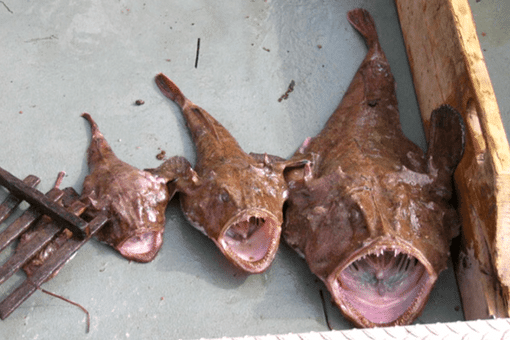
From a Boat
Trawling is the best way to catch a monkfish in deep water. After all, these fish can sit up to 3,000ft (about 0.9km) beneath the ocean surface. That’s about twice the maximum reach of deep-sea fishing lines.
So, reaching monkfish while fishing from a boat generally requires bottom-trawling equipment. That usually involves several lines of rope connected to a wide weighted net.
You deploy this equipment upon reaching a pre-selected spot. The boat uses the trawling net to scoop up sea creatures on the ocean floor. This approach allows substrate (sand and dirt) to pass through the netting.
Trawling is a somewhat controversial practice, especially when used by commercial fisheries. However, recreational anglers typically only trawl short distances on their fishing excursions. This preference ensures a diminishing risk to marine wildlife.
That said, it’s crucial to note that bottom trawling is banned along much of the United State’s West Coast. Monkfish aren’t native to Pacific waters, so you won’t need to worry about this West Coast ban.
Are Monkfish Safe To Eat?
Yes, Monkfish is safe to eat, as this fish doesn’t produce any toxins (unlike pufferfish). In fact, the fish is a delicacy throughout much of the world due to its rich, slightly sweet flavor.
What Does Monkfish Taste Like?
The taste of monkfish is often compared to lobster. It is often referred to as “poor man’s lobster”.
Even though this fish is a bottom feeder, it has a bright, clean flavor that’s somewhat sweet. Monkfish are popular dishes in fine-dining restaurants worldwide due to their delicate flavor.
Their meat is quite firm and pale, similar to the consistency of fresh lobster or chicken. These qualities make the fish perfect for grilling and frying.
How To Cook Monkfish
You can choose to cook monkfish in several ways, and the best one depends on your preferences.
That said, most people serve monkfish dishes gently fried in a butter mixture. Doing so allows the meat to develop a crisp exterior while retaining its firm, sweet interior. The cooking process is often referred to as butter searing. It’s also a popular method of cooking lobster tails!
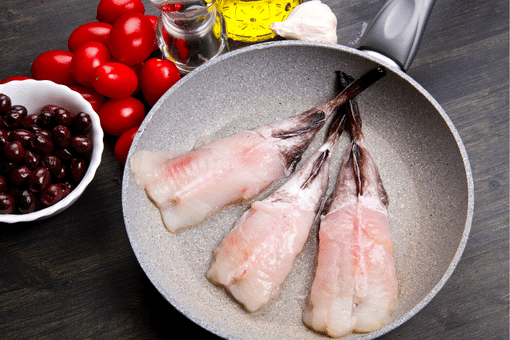
To butter-sear its meat, you’ll need the following pieces of equipment:
- A cast iron skillet
- A sharpened chef’s knife
- A cutting board
You’ll also need butter and herbs. Also, you could add freshly-squeezed lemon juice. But this ingredient is usually applied to the seared fish filets before serving.
Monkfish do not contain any dangerous toxins. So, you won’t need to perform that much preparation before cooking the meat. In saying that, you might have to slice the fish into smaller pieces. That ensures they cook through during the pan-searing process.
Find a quality monkfish recipe to guide you through the process to help you create a delicious meal. We particularly love this butter-searing monkfish recipe!
But once you’ve caught a monkfish, you’re bound to enjoy its lobster-like taste!
- Do You Need An Indicator For Nymph Fishing? - November 16, 2023
- Fishing Safety Tips For Families - September 25, 2023
- What Is The Best Time To Night Fish At A Lake? - September 18, 2023


